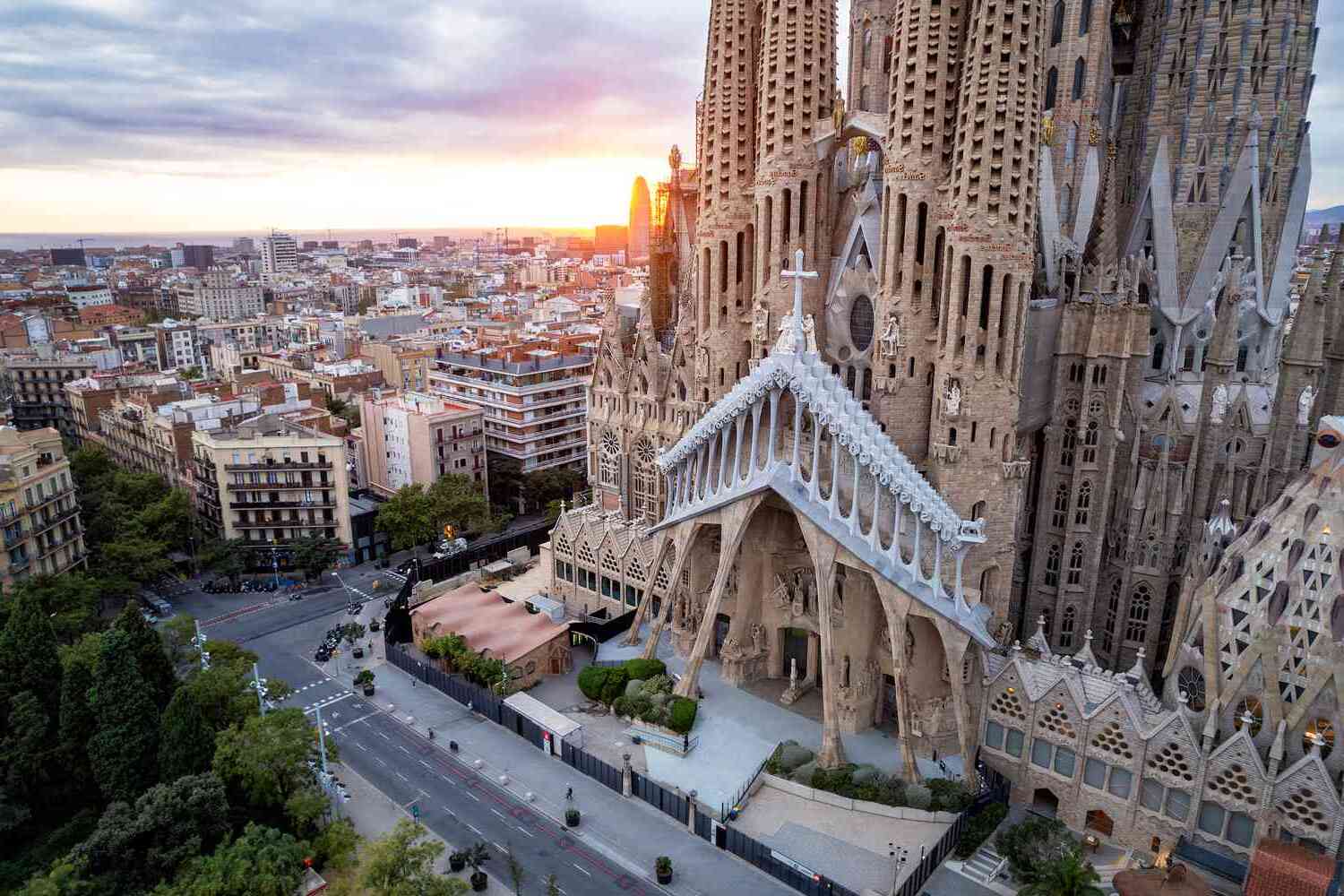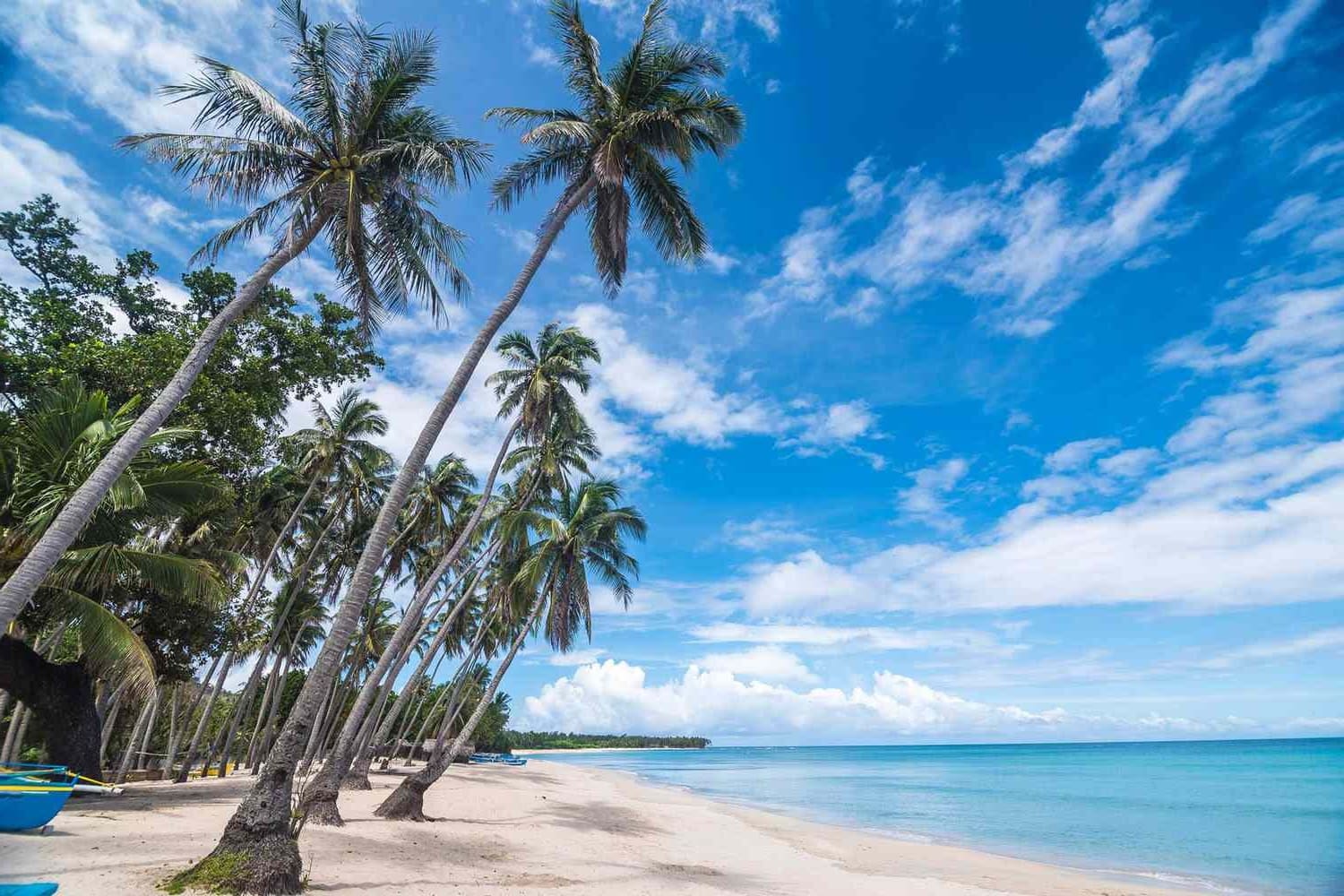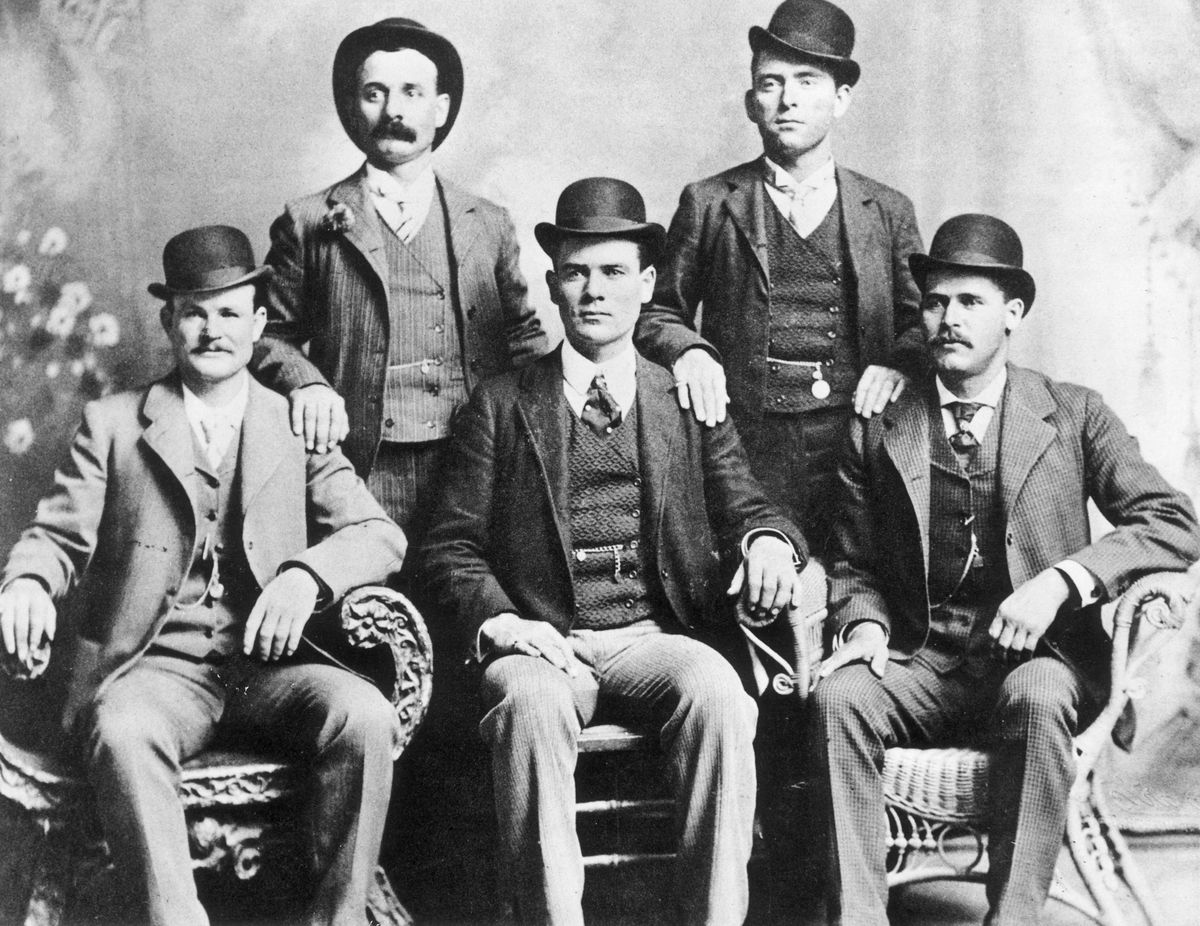
Barcelona, the vibrant capital of Catalonia, is a city that seamlessly blends history, culture, architecture, and natural beauty. Located on the northeastern coast of Spain, Barcelona captivates travelers from around the globe. From its stunning beaches to its iconic landmarks, and from its rich gastronomy to its dynamic cultural scene, Barcelona offers a unique experience that is both fascinating and unforgettable. Did you know that Barcelona is the only city in the world to be awarded a Royal Gold Medal for architecture by the Royal Institute of British Architects? This prestigious award highlights the city's substantial contribution to international architecture, showcasing its unique and influential heritage.
Key Takeaways:
- Barcelona's architecture is a unique blend of Gothic and modernist styles, featuring iconic works by Gaudí and others, making it a must-see for history and design enthusiasts.
- From its transformation into a beach paradise to its vibrant cultural scene, Barcelona offers a diverse and captivating experience for visitors, blending history, innovation, and natural beauty.
Barcelona's Unique Architecture
Barcelona is a city where history and modernity coexist in harmony. Its architecture is a testament to this blend, showcasing both Gothic and modernist styles.
-
Barcelona's Unique Architecture: The city is famous for its mix of Gothic and modernist architecture, featuring works by Antoni Gaudí, Lluís Domènech i Montaner, and Josep Puig i Cadafalch. Gaudí's masterpieces like the Sagrada Família, Park Güell, and Casa Milà are must-sees.
-
Royal Gold Medal for Architecture: Barcelona is the only city to receive the Royal Gold Medal for architecture from the Royal Institute of British Architects, highlighting its global architectural significance.
Transformations and Innovations
Barcelona has undergone significant changes over the years, transforming from an industrial hub to a vibrant, modern city.
-
Beachless Past: Before the 1992 Olympics, Barcelona had no beaches. The coastline was industrial, but the Olympics led to the creation of seven blue-flagged beaches, including the world-renowned Barceloneta Beach.
-
Busiest Pedestrian Street: Portal de l’Àngel in Ciutat Vella is Spain's busiest pedestrian street, attracting 150,000 people daily. It's a shopping paradise and one of the most expensive streets in the country.
-
Older Than Rome: Some theories suggest Barcelona was founded by Hercules 400 years before Rome, adding to its mysterious and rich history.
Cultural and Social Highlights
Barcelona is not just about architecture; its culture and social life are equally captivating.
-
Cannabis Paradise: Known for its relaxed attitude towards cannabis, Barcelona allows smoking marijuana in private settings or members-only cannabis clubs.
-
Largest City on the Mediterranean: Covering 101.4 square kilometers with a population of 1.602 million (as of 2014), Barcelona is the largest city on the Mediterranean Sea and Spain's second-largest city.
-
World Book and Copyright Day: Celebrated on April 23rd, Saint George's Day inspired UNESCO to create World Book and Copyright Day in 1995, emphasizing the importance of literature.
Iconic Landmarks and Attractions
Barcelona's landmarks are iconic, drawing millions of visitors each year.
-
Eiffel Tower's Original Plan: Gustave Eiffel initially planned to build the Eiffel Tower in Barcelona, but Spain rejected it due to its size and cost. It was later built in Paris.
-
Busiest Cruise Port in Europe: Barcelona's port is Europe's busiest, with nearly 3 million cruisers annually, making it the 6th busiest in the world.
-
First Ice Bar on a Beach: Icebarcelona, opened in 2007, is the world's first ice bar located on a beach, offering a unique experience.
Museums and Culinary Delights
Barcelona is a haven for museum lovers and food enthusiasts alike.
-
55 Museums: The city boasts 55 museums, with the FC Barcelona Museum being the most visited, attracting over 1.5 million visitors annually.
-
Over 20 Michelin-Starred Restaurants: Barcelona's culinary scene includes more than 20 Michelin-starred restaurants, offering a mix of traditional and innovative dishes.
-
Biosphere World Class Destination: Barcelona is the first city to gain the “Biosphere World Class Destination” certification, highlighting its commitment to sustainability.
Gaudí's Masterpieces and Urban Planning
Antoni Gaudí's works and Barcelona's urban planning are marvels of innovation and design.
-
UNESCO-Protected Monuments: Barcelona has nine UNESCO-protected monuments, including the Sagrada Família, Park Güell, and Casa Milà, recognized for their architectural value.
-
La Sagrada Família’s Century-Long Construction: Under construction since 1882, Gaudí's Sagrada Família is expected to be completed by 2026, showcasing his intricate designs.
-
Eixample District’s Unique Layout: Designed to reduce congestion, the Eixample district's grid-like pattern contributes to Barcelona's efficient urban planning.
Historical and Natural Beauty
Barcelona's history and natural beauty make it a unique destination.
-
Arc de Triomf: Built for the 1888 Barcelona World Fair, the Arc de Triomf is a symbol of the city's rich history.
-
Montjuïc Mountain’s Hidden Cemetery: Offering breathtaking views, Montjuïc Mountain is home to a historic cemetery, providing a glimpse into Barcelona's past.
-
Original Gothic Quarter: Dating back to Roman times, the Gothic Quarter is a historical maze filled with narrow streets and medieval buildings.
Parks and Green Spaces
Barcelona's commitment to green spaces is evident in its numerous parks and gardens.
-
World’s Largest Metropolitan Park: Collserola Park, 22 times larger than New York's Central Park, offers a serene escape with stunning views.
-
Gastronomic Heaven: With over 20 Michelin-starred restaurants, Barcelona is a culinary paradise, offering diverse and delicious options.
-
Innovative Art Scene: Beyond Gaudí, Barcelona's contemporary art scene thrives with numerous galleries and street art spots.
Festivals and Traditions
Barcelona's festivals and traditions add to its vibrant cultural scene.
-
Magic Fountain of Montjuïc: This spectacular display combines color, light, motion, music, and water acrobatics, offering a mesmerizing experience.
-
Love for Skateboarding: Known as a skateboarding capital, Barcelona's streets and parks are a paradise for skaters.
-
City of Festivals: Hosting numerous festivals like La Mercè and Sant Jordi, Barcelona's streets come alive with music, dance, and cultural activities.
Unique Culinary Experiences
Barcelona's food scene is diverse, offering unique and traditional culinary delights.
-
Inventors of Cava: Catalonia is the birthplace of cava, a sparkling wine similar to champagne, first produced in 1872.
-
Best Urban Beaches: National Geographic ranks Barcelona's beaches among the top ten city beaches globally, offering a unique experience.
-
FC Barcelona’s Camp Nou: Home to FC Barcelona, Camp Nou is Europe's largest stadium with a seating capacity of 99,354.
Linguistic and Cultural Diversity
Barcelona's linguistic and cultural diversity is a significant part of its identity.
-
Diverse Linguistic Community: With Catalan and Spanish as official languages, most residents are bilingual, reflecting the city's strong regional identity.
-
Historical Significance: Landmarks like the Palace of the Generalitat and the Royal Palace highlight Barcelona's importance as an administrative and religious center.
-
Roman Walls: The ancient Roman walls, incorporated into the medieval city, provide a glimpse into Barcelona's historical development.
Natural Beauty and Climate
Barcelona's natural beauty and pleasant climate make it an attractive destination.
-
Natural Beauty: Nestled between mountains and the Mediterranean Sea, Barcelona offers breathtaking natural beauty.
-
Green Areas: With over 90 parks and gardens, 3.5% of Barcelona's surface area is dedicated to green spaces.
-
Catalan Identity: Catalonia's strong regional identity includes traditional dances like the Sardana, unique to the region.
Political and Social Movements
Barcelona's political and social movements reflect its dynamic and evolving identity.
-
Independence Movement: Catalonia's significant independence movement advocates for greater autonomy or independence from Spain.
-
Historical Development: Influenced by its strategic location, Barcelona's development led to the emergence of industrial suburbs and towns.
Climate and Cultural Revitalization
Barcelona's climate and cultural revitalization contribute to its vibrant atmosphere.
-
Climate: With mild temperatures ranging from 49°F (9°C) in January to 76°F (24°C) in August, Barcelona enjoys a pleasant climate.
-
Cultural Revitalization: Since the late 1970s, the recognition of the Catalan language and regional self-government has enriched Barcelona's cultural scene.
Archives, Libraries, and Modernist Architecture
Barcelona's archives, libraries, and modernist architecture are treasures of knowledge and design.
-
Archives and Libraries: Numerous archives and libraries showcase Barcelona's rich cultural heritage.
-
Modernist and Art Nouveau Architecture: Renowned for its Modernist and Art Nouveau architecture, Barcelona features iconic buildings like Casa Milà and La Pedrera.
Unique Local Experiences
Barcelona offers unique local experiences that add to its charm.
-
Suizo Hot Chocolate: Suizo, a traditional hot chocolate with cream, is a favorite in Barcelona's tea rooms called granjas.
-
Statue of Liberty: Barcelona has one of the original Statue of Liberties, located at the Arús Library, adding to its cultural significance.
-
Smoking Marijuana: Legal in private settings or members-only cannabis clubs, Barcelona's relaxed attitude towards cannabis attracts many visitors.
Historical Landmarks and Culinary Variety
Barcelona's historical landmarks and culinary variety make it a fascinating destination.
-
Oldest House in Barcelona: Built in the 12th century, the oldest house is located at 6 Sant Domènec del Call Street, offering a glimpse into the city's ancient past.
-
Variety of Patatas Bravas: With 9,000 versions of patatas bravas, this famous Spanish tapa reflects the creativity of Catalan cuisine.
Sunny Days and Green Spaces
Barcelona's sunny days and green spaces contribute to its vibrant and lively atmosphere.
-
Sunny Days: With an average of 310 sunny days per year, Barcelona is one of the sunniest cities in the world.
-
Green Spaces: About 3.5% of Barcelona's surface area is dedicated to green spaces, including over 90 parks and gardens.
Bike-Friendly City and Cultural Diversity
Barcelona's bike-friendly infrastructure and cultural diversity make it an inclusive and accessible city.
-
Bike-Friendly City: With a well-developed network of bike lanes and cycling paths, Barcelona is one of the world's most bike-friendly cities.
-
Cultural Diversity: A blend of Catalan, Spanish, and international influences, Barcelona's rich history, vibrant festivals, and dynamic cultural scene make it a fascinating destination.
Barcelona: A City of Endless Wonders
Barcelona's got a bit of everything. From Gaudí's architectural marvels like the Sagrada Família to the bustling beaches that didn't even exist before the 1992 Olympics, the city blends history, culture, and modernity seamlessly. Whether you're wandering through the Gothic Quarter, marveling at the Magic Fountain of Montjuïc, or enjoying a game at Camp Nou, there's always something to see or do. The city's culinary scene is top-notch too, with over 20 Michelin-starred restaurants and countless versions of patatas bravas to try. And let's not forget the vibrant festivals and the world's largest metropolitan park, Collserola. Barcelona's unique charm and endless attractions make it a must-visit destination. So, pack your bags and get ready to explore this incredible city. You won't be disappointed!
Frequently Asked Questions
Was this page helpful?
Our commitment to delivering trustworthy and engaging content is at the heart of what we do. Each fact on our site is contributed by real users like you, bringing a wealth of diverse insights and information. To ensure the highest standards of accuracy and reliability, our dedicated editors meticulously review each submission. This process guarantees that the facts we share are not only fascinating but also credible. Trust in our commitment to quality and authenticity as you explore and learn with us.


